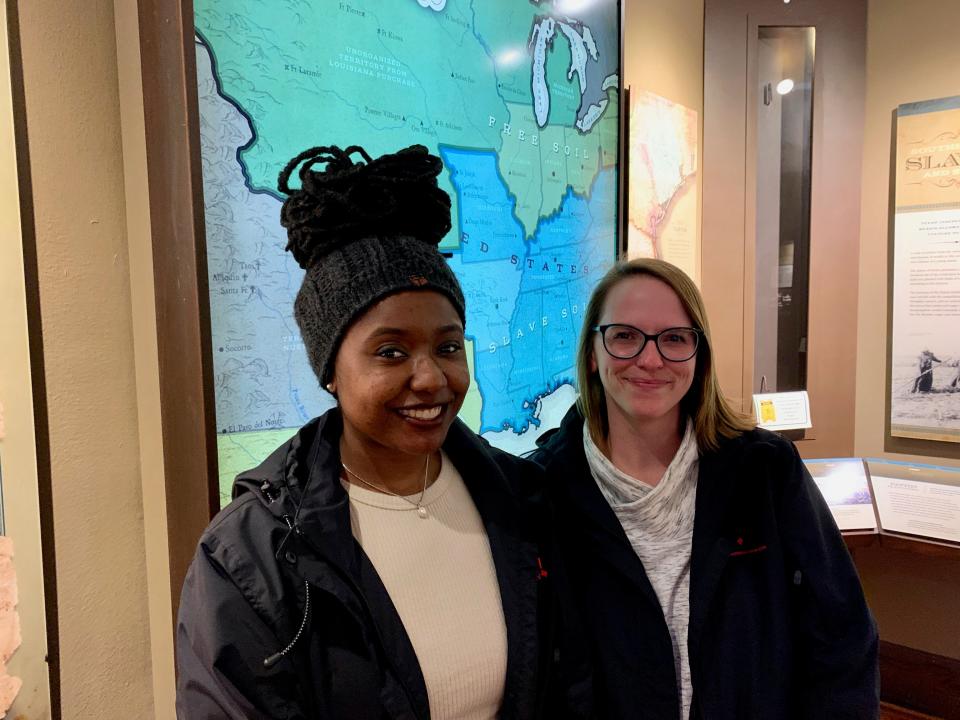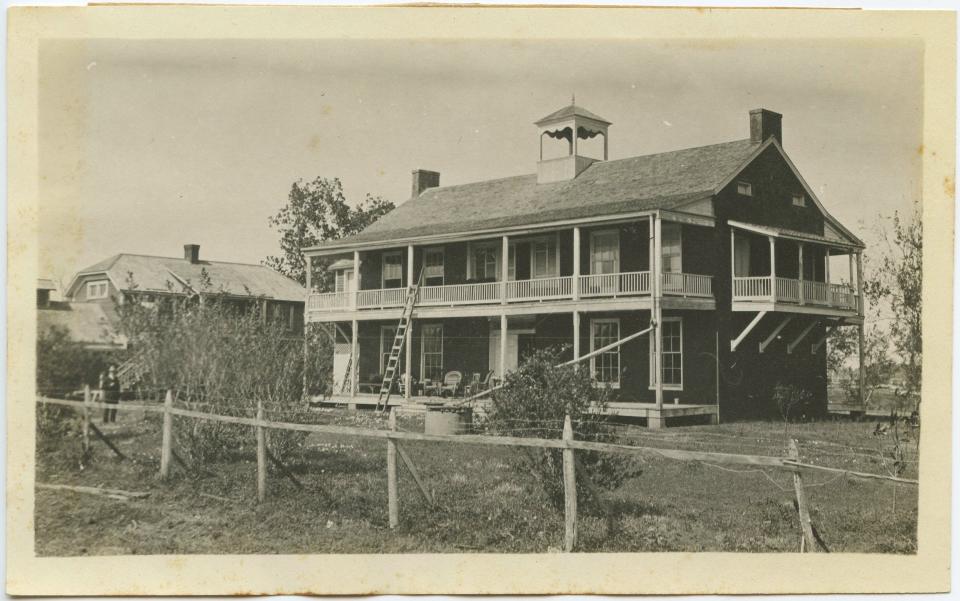Hearing the full story of life on a Texas plantation
Welcome back to “Think, Texas,” your free weekly digital newsletter about all things Texas past.

This week's column takes up a serious quandary encountered on vacation.
Although I thoroughly enjoy my winter breaks on the Texas Gulf Coast, I get twitchy about once a week. There is such a thing as too much serene beach time.
One of my side day trips this February was to West Columbia, once the capital of Texas, where I visited the Varner-Hogg Plantation. I had toured this historical site located not far from the Brazos River years ago.
This time, my tour was more thorough. And the place had changed. The exhibits and displays were infinitely more informative.
And instead of focusing heavily on the antiques and decor that the late philanthropist Ima Hogg had collected for the 19th-century main house, the site interpreters these days tell a wider range of stories about the lives of the people who lived, worked and died there.
Today's column delves into the conundrum introduced by new Texas laws that limit the way that students can learn about the stories of race and slavery, which includes interpreting sites such as Varner-Hogg.
Read for yourself and, if you are in the West Columbia area, visit the Texas Historical Commission site. If you are like me, you will learn more than a thing or two.
Questions? Tips? Send your Texas history questions, tips and comments to Michael Barnes at mbarnes@gannett.com.
Miss a column? Go to our column archives.
Miss a newsletter? Go to our newsletter archives.
Sign up: To get the free Think, Texas weekly digital newsletter, go to the American-Statesman newsletter page, or that of your hometown USA Today newspaper in Texas.

THE COLUMN
In the face of new state laws, telling the whole story of Texas plantation life
WEST COLUMBIA — Back in February, during a break from a winter retreat at a beach on the Texas coast, I traveled inland to tour an old plantation.
I knew that I would encounter uncomfortable history. What I did not predict was how difficult it is these days to tell the true stories of Texas past, especially in the face of new state laws that attempt to limit the ways that slavery is taught.
One of the interpreters at the Varner-Hogg Plantation, Kennedy Wallace, was particularly helpful guiding me through this conundrum that she shares with other tour guides and educators.
Recently for instance, Wallace, who is Black, gave a tour of the plantation to a group of Black visitors, mostly children, she chose her words carefully, which she would have done on any occasion.
"I tried not to go into great detail about how a runaway slave was punished," Wallace remembers. "But one of the Black fathers in the group told me to proceed, saying: 'No, they need to know.' I then gave the same details Sarah Ford did during her slave narrative."
Ford's eyewitness account of slavery is crucial, whether it might, in the telling, make a white audience feel blame or guilt, or a Black audience anger and resentment.
She was enslaved on this very plantation in West Columbia. Ford was interviewed at her Houston home in 1937 as part of a Federal Writers Project oral history program. Her story is available online through the Library of Congress.
Ford's account of the punishment of one runaway includes whippings, scaldings with hot grease, and shackling in the smokehouse while the burns remained untreated.
Yet interpreters like Wallace are somewhat hampered these days by new state laws that limit how educators can carry out discussions about history and race. READ MORE
THE PODCAST
On this week's "Austin Found" podcast, J.B. Hager and I chat about the new book, "Indelible Austin: Volume 4," the latest in my series of collected columns about Austin people, places, culture and history.
HOMETOWN HISTORY
· From Abilene: Celebrate 140 years of Abilene history at your library
· From Alice: City’s history now on public display
· From Amarillo: Book relates homespun history of life in the Panhandle
· From Austin: Statesman born in the shadow of the country’s darkest days
· From Brownwood: Brown County Museum named Purple Heart Museum
· From Corpus Christi: Deep roots in the Corpus Christi area
· From El Paso: Valley towns became first big cities in area in 1800s
· From Glen Rose: Dinosaurs, water, books and history in Glen Rose
· From Lubbock: Caprock Chronicles: An honest history
· From San Angelo: 125 years of newspaper history
· From Sherman: How it all began: Histories of Sherman, Denison
· From Stephenville: How Stephenville got its name
· From Waxahachie: Daily Light moves to historic downtown
· From Wichita Falls: Wichita County deserves more markers
FUN TEXAS FACT
First state museum in Texas opens
On April 14, 1933, the Panhandle-Plains Historical Museum, the first state museum in Texas, opened in Canyon.
The museum was an outgrowth of the Panhandle-Plains Historical Society, founded in 1921 by faculty and students of West Texas State Teachers College, and is a cooperative effort between the society, which owns and controls the collections, and the state of Texas, which provides and maintains the facilities through West Texas A&M University and the Texas A&M University Board of Regents.
In addition to its major anthropology, geology, paleontology and natural history collections, the museum has extensive materials on the ranching industry, the Plains Indians, and the oil and gas industry, and galleries devoted to American and European art with an emphasis on such Texas artists as Frank Reaugh and Harold Bugbee
(Texas Day by Day / Texas State Historical Association) READ MORE
TEXAS TITLES
We recommend: "Da Mayor of Fifth Ward: Stories from the Big Thicket and Houston" by Robert "Bob" E. Lee
The very first book published by the new Prairie View A&M University Press, in partnership with the well-established Texas A&M University Press, is a beautiful sequence of stories set in Deep East Texas and in Houston's Fifth Ward, a historically Black neighborhood. The author, Robert "Bob" E. Lee, was a community leader who died in 1917. Writer and editor Michael Berryhill first published these gems in the Houston Chronicle's Texas magazine. READ MORE
Thanks for reading,
Michael Barnes, Columnist
Email: mbarnes@statesman.com
Twitter: twitter.com/outandabout
This article originally appeared on Austin American-Statesman: Hearing the full story of life on a Texas plantation

